
REEF CARE PROGRAM
Trace-Colors™
Supplements
Benutzerhandbuch
DE
User Manual
GB
Manuel utilisateur
FR
Handleiding
NL
Manual del usuario
SP


Red Sea’s Reef Care Program - Recipes
The complete Reef Care program is the result of years of research into the physiological
demands of SPS, LPS & Soft Corals in the reef aquarium. Reef Care Recipes® translates the
many years of practical experience with Red Sea’s Reef Care Program on tens of thousands
of diverse reef tanks worldwide into a simple to implement regimen of water management
activities specically for the most common types of hobby reef aquariums.
Water management refers to all of the water related activities such as water changes, testing
and supplementing that needs to be done on a regular basis to ensure the success of your
reef aquarium. This is not just limited to maintaining the ideal balance of the seawater but
also deals with controlling nuisance algae and coral nutrition for their long term health and
vitality.
In addition to the Trace-ColorsTM program, which is fully described below, the complete Reef
Care program also includes the following:
FoundationTM – Provides biologically balanced levels of the foundation elements (Calcium,
Carbonates and Magnesium) that ensures the optimal water conditions for a sustainable,
vibrant coral reef.
Algae Management Program – Controlled nitrate & phosphate reduction that prevents
nuisance algae and provides the ne control of Zooxanthellae populations that signicantly
affect coral growth rates and coloration.
Reef Energy® – Provides the carbohydrates, vitamins, amino and fatty acids that fuel all
metabolic processes of corals.
For optimal results you should implement the complete program.
GB

2 | Red Sea | Reef Care Program
Trace-ColorsTM
Red Sea’s research into the metabolic demand of 3 different coral types (SPS, LPS, soft
corals) has identied 31 minor and trace elements that in addition to the foundation
elements are present in the skeleton and soft tissue of all corals. These elements
are known as important bio-catalysts in thousands of metabolic processes in marine
organisms and therefore must be readily available in all reef aquariums. Many of them
however become toxic in concentrations above the levels found in natural sea water and
therefore their correct dosage is crucial to the long term success of any reef aquarium.
Our research has identied 4 distinct groups of elements with similar biological functions
as well as a direct connection to specic coral pigments that enabled the division of the
31 elements into the 4 supplements Trace-ColorsTM Iodine+, Potassium+, Iron+ & Bioactive
Elements. Trace-ColorsTM supplements have been formulated such that the ratio of the
elements in each supplement are the same as are found in the combined coral skeleton
and soft tissue.
All of the Trace-ColorsTM should be supplemented regularly to mixed reefs and SPS
aquariums without connection to the specic colors.
In reef aquariums corals often have higher than natural populations of Zooxanthellae
algae that give a deep brown tint obscuring the natural vivid pigments of the corals.
Lowering the Zooxanthellae populations by ne control of algae nutrients (with NO3:PO4-X)
will remove the brownish tint and induce the production of pigments (chromoproteins)
that protect the delicate inner layers of the coral soft tissue from intense UV radiation,
similar to the tanning of human skin when exposed to direct sunlight.
Our research has shown that the pigments can only be produced by the soft tissue of the
coral if the specic elements required for the bio-chemical process are available in the
correct concentration. Each of the natural pink, red, green/yellow & blue/purple pigments
are connected with specic elements that correlate with the elemental grouping of the
Trace-ColorsTM Iodine+, Potassium+, Iron+ & Bioactive Elements.

Trace-Colors™ | 3
Dosing by calcium demand
Our research has identied a constant ratio between each of the Trace-ColorsTM and the
overall consumption of calcium, which is proportional to coral growth and metabolic activity.
Therefore, by measuring the uptake of calcium by the corals we are able to replenish all of
the elements that have denitely been depleted from the water by the corals, without the
danger of reaching toxic levels.
Dosing by total elemental demand
Trace-ColorsTM Iodine+, Potassium+ & Iron+ each contain a leading element (Iodine, Potassium
& Iron) that is accurately measurable with Red Sea’s unique Trace-ColorsTM Pro test kits
enabling the replenishment of each of these supplements according to the total demand of
the reef.
GB

4 | Red Sea | Reef Care Program
The Trace-ColorsTM Supplements
Trace-Colors™ Iodine+ Complex of halogen elements
Main elements Iodine, Bromine and Fluorine
Test for dosing Calcium or Iodine
Function
The halogens act both as antioxidants and oxidative agents within the
soft tissue and mucus layer of corals, reducing the possibilities for coral
bleaching. In active reef systems these elements are depleted very quickly
due to their high oxidative abilities and reactivity with organic materials.
Coloration Iodine and bromine are related to the pink chromo-protein (pociloporin)
Level in NSW Iodine 0.06 ppm; Bromine 65 ppm; Fluorine 1.3 ppm
Overdose
Halogens can have adverse effects on the soft tissues of corals and all
micro-fauna. Common indication of overdose is a severe regression of the
soft tissues of hard corals and pale colors in soft corals. In case of over dosing
change 50% of the water and reduce the supplementing dosage by 50%.
Trace-Colors™
Potassium+ Complex of Potassium and Boron
Main elements Potassium and Boron
Test for dosing Calcium or Potassium
Function
Potassium has an essential role in the transportation of coral nutrients within
the soft tissue including the nutrients provided by the Zooxanthellae. Potassium
and boron have a signicant effect on the alkalinity inside the coral soft
tissue and play a role in the formation of aragonite in the coral skeleton.
Coloration Potassium is related to the red chromo-proteins (peridinin, neo-peridinin)
Level in NSW Potassium 400 ppm: Boron 4.6 ppm
Overdose Common indication of overdose is a darkening of the corals due to excessive
Zooxanthellae growth and the outbreak of nuisance algae. In case of over dosing
change 25 % of the water and reduce the supplementing dosage by 50%.

Trace-Colors™ | 5
Trace-Colors™ Iron+ Complex of 8 “light” metals
Main elements Iron, Manganese, Cobalt, Copper, Aluminum, Zinc, Chrome and Nickel
Test for dosing Calcium or Iron
Function
Essential micro-elements with fundamental roles in many bio-
chemical metabolic processes including respiration and production
of energy, chlorophyll and photosynthetic catalysts.
These elements precipitate into the coral skeleton which
act as a reservoir for their use in the soft tissue.
Coloration C elements are related to the green/yellow chromo-proteins (GFP)
Optimal level 0.15 ppm of total iron (chelated and non-chelated) in an articial reef aquarium
Overdose
Toxic to all invertebrates above recommended levels. Common indication
of overdose is a darkening of the corals due to excessive Zooxanthellae
growth and the outbreak of nuisance algae. Can cause regression
of the soft tissues in SPS corals. In case of over dosing change 50 %
of the water and reduce the supplementing dosage by 50%.
Trace-Colors™
Bioactive Elements Complex of 18 trace elements
Main elements Silver, Gold, Vandium and Tungsten
Test for dosing Calcium
Function These 18 elements (out of all the trace elements in NSW) participate in
different metabolic processes inside coral skeleton and soft tissue.
Coloration D elements are related to the blue/purple chromo-proteins
(pociliporin , diadinoxanthin and dinoxanthin)
Overdose Can cause severe regression of the soft tissues of corals and stress to crustaceans.
Common indication of overdose is a darkening of the corals. In case of over
dosing change 50 % of the water and reduce the supplementing dosage by 50%.
GB

6 | Red Sea | Reef Care Program
Testing and Supplementing
Test either Calcium or the Color Elements every week and dose all 4 Trace-ColorsTM
supplements on a daily basis.
Mixed Reef & SPS Dominant systems -
Dosing by calcium (coral growth) demand
Calculate the daily or weekly dose of each supplement according to the dosage of Red Sea’s
FoundationTM supplements or to a known uptake of calcium. (Add 1ml of Color supplement for
every 20ppm of Calcium added per 100 liters (25 gal) of aquarium water or for every 2g of
calcium uptake.)
Ultra low nutrient systems - Dosing by total elemental demand
Initial adjustment of Colors Elements to optimal levels
When rst using the Trace-ColorsTM products or after a water-change, test the levels of the
Color Elements and supplement as necessary to achieve the optimal levels.
Ensure that all of the Trace-ColorsTM Elements are at optimal values and run the aquarium for 4
days at a stable salinity (compensate for evaporation daily) without adding any supplements.
At the end of the 4 days test the Trace-ColorsTM Elements and calculate the “4 day dosage”
of each supplement to replenish back to the optimal levels. Add the “4 day dosage” to the
system. Divide this “4 day dosage” by 4 and use as the daily dosage for the next week.
After a week of adding the daily dosage, test the Trace-Colors™ Elements and calculate the
adjusting dosage of each supplement to replenish back to the optimal levels.
• If the adjusting dosage is signicantly different from the previous daily dosage amend
(increase/decrease) the daily dosage as appropriate.
• If the measured level of a specic element is above the optimal level wait for the excess of
the element to be depleted before restarting the daily supplementation with the amended
daily dosage.

Trace-Colors™ | 7
Continue testing all of the elements every week and make adjustments to the daily dosages
as required. As your corals grow or you add or remove livestock the uptake of the elements
in your aquarium will gradually change. It is recommended to keep a log book of the weekly
measurements and dosages.
If you miss one or more days of supplementing add the complete amount that you have
missed but do not exceed the maximum recommended daily increase for any of the
elements.
General instructions for testing and supplementing:
1. Before carrying out any water testing always check the salinity and make adjustments
as necessary. If you have made adjustments to the water wait 10 minutes for the water
parameters to stabilize (e.g. 1ppt increase in salinity due to evaporation of fresh water
will result in an approximate increase of 13ppm Ca).
2. Test only with high accuracy test kits such as Red Sea’s Pro Kits
3. All of the Red Sea Reef Care Program supplements have dosing charts (on back of
product) based on treating 100 liters / 25 gallons of water. Estimate your total volume
of water (aquarium & sump less volume of live rocks etc) to calculate the correct dosage
for your system.
4. Supplements should be added to the sump. If you do not have a sump, add the
supplements slowly to an area with high water ow to prevent direct contact with the
corals.
5. To prevent stress to the corals the maximum daily increases of each of the elements are
as follows: Iodine 0.03ppm; Potassium 10ppm; Iron 0.05ppm. Larger adjustments should
be spread over a few days according to the daily maximum.
GB

8 | Red Sea | Reef Care Program
The Trace-ColorsTM Test Kits
Red Sea’s Iodine Pro test kit is an advanced colorimetric test, measuring the level of total
Iodine as Iodide (I-) & Iodate (IO3) to an exceptionally high accuracy of 0.01 ppm. This test kit
enables the accurate dosing of Trace-Colors™ Iodine+ supplement.
Red Sea’s Potassium Pro test kit is an advanced titration test, measuring the level of
potassium to an exceptionally high accuracy of 3 ppm. This test kit enables the accurate dosing
of Trace-ColorsTM Potassium+ supplement.
Red Sea’s Iron Pro test kit is an advanced colorimetric test, measuring the level of total Iron
(chelated and non-chelated iron) to an exceptionally high accuracy of 0.05 ppm. This test kit
enables the accurate dosing of Trace-ColorsTM Iron+ supplement.

Trace-Colors™ | 9
GB

10 | Red Sea | Reef Care Program
Das Reef Care Programm von Red Sea - Rezepte
Das vollumfängliche Reef Care Programm ist das Ergebnis jahrelanger Erforschung der
physiologischen Bedürfnisse von SPS-, LPS- und Weichkorallen im Riffaquarium. Die Reef
Care Rezepte setzen die praktische Erfahrung des „Reef Care“ Programms aus vielen Jahren
und bei mehr als 10000 verschiedenen Riffaquarien weltweit für die wichtigsten Arten von
Meerwasseraquarien in einfach zu realisierende Wassermanagement Aktivitäten um.
Wassermanagement meint alle auf das Wasser bezogene Aktivitäten, wie z.B.
Wasserwechsel, Wassertests und Supplementierung, die auf regelmäßiger Basis erfolgen
müssen, um den Erfolg Ihres Riffaquariums sicherzustellen. Dies beschränkt sich nicht nur auf
die ideale Balance des Meerwassers, sondern befasst sich auch mit der Kontrolle von nicht
erwünschten Algen und der Nährstoffversorgung, um langfristig Gesundheit und Vitalität der
Korallen sicherzustellen.
Zusätzlich zum Trace-ColorsTM Programm, dessen Produkte weiter unten genau beschrieben
werden, beinhaltet das Reef Care Riffpege-Komplettprogramm folgende Sortimente:
FoundationTM – Liefert biologisch ausgewogene Mengen der Aufbaustoffe (Calcium,
Carbonate und Magnesium), die optimale Wasserbedingungen für ein langfristig lebhaft
gedeihendes Korallenriff garantieren.
Algae Management-Programm – Kontrollierte Nitrat- und Phosphatreduktion, die
unerwünschte Algen verhindert und die Feinsteuerung der Zooxanthellen-Populationen
ermöglicht, die einen bedeutenden Einuss auf Wachstumsrate und Farbentfaltung der
Korallen haben.
Reef Energy® – Liefert die Kohlenhydrate, Vitamine, Amino und Fettsäuren, die die Energie
für alle Stoffwechselprozesse in Korallen liefern.
Optimale Ergebnisse erzielen Sie, wenn Sie das vollständige Programm verwenden.

Trace-Colors™ | 11
Trace-ColorsTM
Die von Red Sea durchgeführte Forschung zum Stoffwechsebedarf der 3 unterschiedlichen
Korallenarten (SPS-, LPS-, Weichkorallen) hat 31 Neben- und Spurenelemente
nachgewiesen, die neben den Aufbaustoffen im Skelett und Weichgewebe der Korallen
vorhanden sind. Diese Elemente sind bekanntermaßen wichtige Biokatalysatoren in
Tausenden von Stoffwechselprozessen von Meeresorganismen und müssen daher in allen
Riffaquarien direkt verfügbar sein. In Konzentrationen über denen, die man in natürlichem
Meerwasser vorndet, können viele von ihnen jedoch giftig werden, daher ist ihre richtige
Dosierung entscheidend wichtig für den langfristigen Erfolg eines jeden Riffaquariums.
Unsere Forschung hat gezeigt, dass es 4 unterschiedliche Element-Gruppen mit ähnlichen
biologischen Funktionen wie auch jeweils einer direkten Verbindung zu speziellen Korallen-
Pigmenten gibt, was die Aufteilung der 31 Elemente in die 4 Zusätze Trace-ColorsTM Trace-
ColorsTM Iodine+, Potassium+, Iron+ & Bioactive Elements ermöglicht hat. Trace-ColorsTM-
Zusätze sind so zusammengesetzt, dass das Mengenverhältnis der Elemente untereinander
in jedem Zusatz genau dem Verhältnis entspricht, das in Korallenskelett und –weichgewebe
zusammen vorliegt.
Alle Trace-ColorsTM-Zusätze sollten regelmäßig allen gemischten Riffaquarien und SPS-
Aquarien zugeführt werden, ungeachtet der Farben der jeweiligen Korallen.
In Riffaquarien beherbergen Korallen häug übernatürlich hohe Zooxanthellen-Populationen,
die ihnen eine tiefbraune Tönung verleihen, die die natürlichen, lebendigen Farbpigmente
der Korallen verbirgt. Eine Verringerung der Zoxanthellen-Populationen durch die
Feinsteuerung der Algennährstoffe (mit NO3:PO4-X) beseitigt die bräunliche Tönung und
leitet die Produktion von Pigmenten (Chromoproteinen) ein, die die empndlichen inneren
Schichten des korallinen Weichgewebes vor intensiver UV-Strahlung schützen, ähnlich der
Bräunung menschlicher Haut, die direktem Sonnenlicht ausgesetzt ist.
DE

12 | Red Sea | Reef Care Program
Unsere Forschung hat gezeigt, dass die Pigmente nur vom Weichgewebe der Koralle
produziert werden können, wenn die speziellen Elemente, die für den biochemischen
Prozess benötigt werden, in der richtigen Konzentration verfügbar sind. Jedes der natürlichen
pinkfarbenen, roten, grün/gelben und blau/violetten Pigmente ist mit den speziellen
Elementen verbunden, die der Element-Gruppierung von Trace-ColorsTM Iodine+, Potassium+,
Iron+ oder Bioactive Elements entspricht.
Dosierung anhand des Gesamtbedarfs an Elementen
Die Zusätze Trace-ColorsTM Iodine+, Potassium+ & Iron+ enhalten jeweils ein führendes
Element (Jod, Kalium & Eisen), das mit den einzigartigen Trace-ColorsTM Pro-Testkits von Red
Sea genau messbar ist, wodurch ein Nachfüllen jedes dieser Zusätze entsprechend dem
Gesamtbedarf des Riffs ermöglicht wird.
Dosierung auf Basis des Calciumbedarfs
Unsere Untersuchuchungen haben auch ein konstantes Mengenverhältnis zwischen den
in den Trace-ColorsTM-Zusätzen enthaltenen Farb-Elementen und dem Gesamtverbrauch
an Calcium nachgewiesen, der sich proportional zum Korallenwachstum und der
Stoffwechselaktivität verhält.Daher können wir durch die Messung des Calciumverbrauchs
der Korallen alle Elemente ergänzen, die dem Wasser von den Korallen entnommen wurden,
ohne Gefahr zu laufen, giftige Konzentrationen zu erreichen.

Trace-Colors™ | 13
DE
Trace-ColorsTM-Zusätze
Trace-Colors™Iodine+ Komplex halogener Elemente
Hauptelemente Jod, Brom und Fluor
Test für Dosierung Calcium oder Iod
Funktion
Die Halogene agieren sowohl als Antioxidantien als auch als oxidative Agentien
innerhalb des Weichgewebes und der Schleimschicht der Korallen und reduzieren
die Wahrscheinlichkeit des Ausbleichens der Korallen. In einem aktiven Riffsystem
erschöpfen sich diese Elemente schnell aufgrund ihrer hohen oxidativen
Fähigkeit und ihrer Reaktionsfreudigkeit in Bezug auf organische Materie.
koralline Färbung Jod und Brom sind mit dem rosafarbenen Chromporotein (Pocciloporin) verbunden.
Gehalt in natürlichem
Meerwasser
Jod 0,06 ppm; Brom 65 ppm; Fluor 1,3 ppm
Überdosierung
Halogene können sich ungünstig auf das koralline Weichgewebe und die
gesamte Mikrofauna auswirken. Allgemeine Anzeichen für eine Überdosierung
sind bei Hartkorallen eine deutliche Rückbildung des Weichgewebes und bei
Weichkorallen eine bleiche Färbung. Wechseln Sie im Falle einer Überdosierung
50% des Wassers und reduzieren Sie die Dosis des Zusatzes um 50%.
Trace-Colors™
Potassium+ Komplex aus Kalium und Bor
Hauptelemente Kalium und Bor
Test für Dosierung Calcium oder Kalium
Funktion
Kalium spielt eine entscheidende Rolle beim Transport der Korallennährstoffe im
Weichgewebe, dazu zählen auch die von den Zooxanthellen gelieferten Nährstoffe.
Kalium und Bor haben einen bedeutsamen Einuss auf die Alkalinität im korallinen
Weichgewebe und spielen eine Rolle bei der Bildung von Aragonit im Korallenskelett.
koralline Färbung Kalium ist mit den roten Chromoproteinen (Peridinin, Neoperidinin) verbunden.
Gehalt in natürlichem
Meerwasser Kalium 400 ppm: Bor 4,6 ppm
Überdosierung
Allgemeine Anzeichen für eine Überdosierung sind eine Verdunklung der
Korallen infolge übermäßigen Zooxanthellenwachstums und die starke
Zunahme unerwünschter Algen. Wechseln Sie im Falle einer Überdosierung
25% des Wassers und reduzieren Sie die Dosis des Zusatzes um 50%.

14 | Red Sea | Reef Care Program
Trace-Colors™ Iron+ Komplex aus 8 “Leicht”metallen
Hauptelemente Eisen, Mangan, Kobalt, Kupfer, Aluminum, Zink, Chrom und Nickel
Test für Dosierung Calcium oder Iron
Funktion
Essentielle Mikroelemente mit grundlegenden Rollen bei vielen biochemischen
Stoffwechselprozessen, darunter die Atmung und die Produktion von
Energie, Chlorophyll und photosynthetischer Katalysatoren.
Diese Elemente setzen sich im Korallenskelett ab, dieses dient
als Speicher für ihre Nutzung im Weichgewebe.
koralline Färbung C-Elemente sind mit den grünen und gelben Chromoproteinen (GFP) verbunden
Optimaler Gehalt 0,15 ppm Eisen gesamt (cheliert und nicht-cheliert) in einem künstlichen Riffaquarium
Überdosierung
Oberhalb der empfohlenen Menge giftig für alle Wirbellosen. Allgemeine Anzeichen
für eine Überdosierung sind die Verdunklung der Korallen infolge übermäßigen
Zooxanthellenwachstums und die starke Zunahme unerwünschter Algen.
Kann bei SPS-Korallen die Rückbildung des Weichgewebes verursachen.
Wechseln Sie im Falle einer Überdosierung 50% des Wassers
und reduzieren Sie die Dosis des Zusatzes um 50%.
Trace-Colors™
Bioactive Elements Komplex aus 18 Spurenelementen
Hauptelemente Silber, Gold, Vanadium und Wolfram
Test für Dosierung Calcium
Funktion Diese 18 Elemente (von allen Spurenelementen im natürlichen
Meerwasser) nehmen an verschiedenen Stoffwechselprozessen
innerhalb des korallinen Skeletts und Weichgewebes teil.
koralline Färbung D-Elemente sind mit blauen/violetten Chromoproteinen verbunden
(Pocciloporin), Diadinoxanthin und Dinoxanthin)
Überdosierung
Kann eine deutliche Rückbildung des korallinen Weichgewebes und Stress bei
Krustentieren verursachen. Allgemeines Anzeichen für eine Überdosierung
ist eine Verdunklung der Korallen. Wechseln Sie im Falle einer Überdosierung
50 % des Wassers und reduzieren Sie die Dosis des Zusatzes um 50%.

Trace-Colors™ | 15
DE
Testen und ergänzen
Testen Sie wöchentlich entweder Calcium oder die Farbelemente und dosieren Sie alle 4 Trace-
ColorsTM Zusätze auf täglicher Basis.
Gemischte Riffaquarien & SPS dominante Systeme - Dosierung auf Basis des
Calciumverbrauchs (Korallenwachstum)
Berechnen Sie die tägliche oder wöchentliche Dosis jedes Zusatzes auf Basis der Dosierung
der Red Sea-Zusätze aus der FoundationTM-Gruppe oder auf Basis eines bekannten
Calciumverbrauchs. Geben Sie pro 100 l Aquarienwasser 1 ml Color-Zusatz auf jede Calcium-
Nachdosierung von 20 ppm, oder 1 ml-Color-Zusatz pro 2 g verbrauchtem Calcium.
“Ultra Low Nutrient Systeme“ - Dosierung auf Basis des Gesamtbedarfs an
Elementen
Anfangs-Einstellung der optimalen Mengen an farbbestimmenden Elementen Testen Sie bei
Erstanwendung der Trace-ColorsTM-Produkte oder nach einem Wasserwechsel den Gehalt der
farbbestimmenden Elemente und fügen Sie sie nach Bedarf zu, um optimale Mengen zu
erhalten.
Sorgen Sie dafür, das jedes der farbbestimmenden Elemente in optimaler Menge vorliegt und
halten Sie 4 Tage lang eine stabile Salzhaltigkeit im Aquarium aufrecht (täglicher Ersatz von
verdunstetem Wasser), ohne irgendwelche Zusätze zu verwenden. Messen Sie am Ende des
vierten Tages die Menge der farbbestimmenden Elemente und berechnen Sie für jedes Element
die „4-Tages-Nachfüll-Dosis“ für Ihr Aquarium. Geben Sie diese dem Aquarium zu. Teilen Sie
diese “4-Tages-Dosis” durch 4 und verwenden Sie in der folgenden Woche die Tagesdosis, die
Sie als Ergebnis erhalten (ein durch 4 geteilter 4-Tages-Wert ist stabiler als der an einem Tag
gemessene Wert).
Testen Sie die farbbestimmenden Elemente nach einer Woche der täglichen Zugabe der
Tagesdosis und berechnen Sie für jeden Zusatz die Anpassungsmenge, die aufgefüllt werden
muss, um wieder die optimalen Werte zu erhalten.

16 | Red Sea | Reef Care Program
• Wenn die Anpassungsmenge sehr von der vorherigen Tagesdosis abweicht, passen Sie
die tägliche Dosis (durch Steigern oder Senken) entsprechend an.
• Wenn die gemessene Menge eines bestimmten Elements über der Optimalmenge liegt,
warten Sie, bis der Überschuss an diesem Element verbraucht ist, bevor Sie wieder mit
der täglichen Zugabe der angepassten Tagesdosis beginnen.
Testen Sie jedes der Elemente weiterhin wöchentlich und nehmen Sie erforderliche
Anpassungen der Tagesdosen vor. Mit dem Wachstum Ihrer Korallen oder Veränderungen
am Lebendbesatz (Aufstockung oder Abbau), verändert sich allmählich der Verbrauch der
Elemente in Ihrem Aquarium. Es empehlt sich, über die wöchentlichen Messungen und
Dosierungen Buch zu führen.
Wenn Sie einen oder mehrere Tage die Gabe von Zusätzen unterbrechen müssen, geben
Sie danach die in dieser Zeit ausgelassene Gesamtmenge, aber überschreiten Sie dabei mit
keinem Element den empfohlenen maximalen täglichen Steigerungswert.
Allgemeine Anweisungen für Tests und Ergänzungen:
1. Messen Sie vor der Durchführung eines Wassertests immer die Salzhaltigkeit und
passen Sie sie, wenn nötig, an. Wenn Sie Anpassungen vorgenommen haben, warten
Sie 10 Minuten, damit sich die Wasserparameter stabilisieren können (zum Beispiel
führt ein Anstieg der Salzhaltigkeit um 1 ppt infolge von Wasserverdunstung zu einem
Anstieg des Calciumgehalts um 13 ppm).
2. Führen Sie die Tests nur mit Testkits durch, die exakte Werte in kleinsten Messbereichen
liefern, wie z.B. die Red Sea Pro-Testkits.
3. Alle Zusätze aus dem Riffpege-Programm von Red Sea haben Dosier-Tabellen (auf der
Rückseite des Produktes), die sich auf die Behandlung von 100 Litern Wasser beziehen.
Veranschlagen Sie Ihr Wassergesamtvolumen (Aquarium plus Filtersumpf, abzüglich des
Volumens von Lebendgestein etc.), um die richtige Dosis für Ihr Aquarium berechnen
zu können.

Trace-Colors™ | 17
DE
4. Die Zusätze sollten in den Filtersumpf gegeben werden. Wenn Ihr Aquarium über
keinen Filtersumpf verfügt, geben Sie die Zusätze langsam in einen Bereich mit starker
Wasserströmung, um direkten Kontakt mit den Korallen zu vermeiden.
5. Um die Korallen keinem Stress auszusetzen, sollte die maximale Steigerung des Gehalts
an einzelnen Elementen täglich folgende Werte nicht überschreiten: Jod 0,03 ppm;
Kalium 10 ppm; Eisen 0,05 ppm. Größere Anpassungen sollten sich gemäß der täglichen
Maximalsteigerung über einige Tage hinziehen.
Die Trace-ColorsTM-Testkits
Red Sea‘s Testkit Iodine (Iod) Pro ist ein fortschrittlicher colorimetrischer Test, der den Jod-
Gesamtgehalt als Jodid (I-) & Jodat (IO3) in Ihrem Riffaquarium mit der außergewöhnlichen
Genauigkeit von 0,01 ppm misst. Dieses Testkit ermöglicht die exakte Dosierung des Red
Sea-Zusatzes Trace-ColorsTM Iodine+ .
Red Sea‘s Testkit Potassium (Kalium) Pro ist ein fortschrittlicher Titrationstest, der den
Kaliumgehalt in Ihren Riffaquarium mit der außergewöhnlichen Genauigkeit von 3 ppm
misst. Dieses Testkit ermöglicht die exakte Dosierung des Red Sea-Zusatzes Trace-ColorsTM
Potassium+.
Red Sea‘s Testkit Iron (Eisen) Pro ist ein fortschrittlicher colorimetrischer Test, der den
Eisengesamtgehalt (cheliertes und uncheliertes Eisen) in Ihrem Riffaquarium mit der
außergewöhnlichen Genauigkeit von 0,05 ppm misst. Dieses Testkit ermöglicht die exakte
Dosierung des Red Sea-Zusatzes Trace-ColorsTM Iron+ .

18 | Red Sea | Reef Care Program
Reef Care Program de Red Sea - Les Recettes Récifales™
Reef Care Program est un programme complet qui est le résultat de plusieurs années de
recherches sur les besoins physiologiques des coraux SPS, LPS et mous en aquarium récifal.
Les Recettes RécifalesTM traduisent les nombreuses années d’expérience d’utilisation du Reef
Care Program de Red Sea sur des dizaines de milliers d’aquariums récifaux divers à travers le
monde dans des instructions simples pour les principaux types d’aquariums récifaux.
Le terme de gestion de l’eau fait référence à l’ensemble des activités relatives à l’eau
comme les changements d’eau, les tests et les supplémentations régulières nécessaires pour
assurer le succès de votre aquarium récifal. Cela ne se limite pas au maintien de l’équilibre
idéal de l’eau de mer mais s’étend au contrôle des algues indésirables et l’apport de
nutriments pour assurer la santé et la vitalité des coraux sur le long terme.
En plus de Trace-ColorsTM, décrit précisément ci-dessous, Le Reef Care Program en entier
comprend les sous-programmes suivants :
FoundationTM – Fournit des niveaux biologiquement équilibrés en éléments fondamentaux
(Calcium, Carbonates et Magnésium) pour assurer des conditions optimales de l’eau qui
permettent d’avoir un récif corallien durable et vibrant.
Algae Management Program – Contrôle la réduction des Nitrates et des Phosphates
pour éviter la propagation d’algues nuisibles et contrôler avec précision les populations de
Zooxanthellae, algues qui affectent signicativement le taux de croissance des coraux et leur
coloration.
Reef Energy® – Fournit les hydrates de carbone, vitamines, acides aminés et acides gras qui
sont le combustible de tous les processus métaboliques des coraux.
Pour des résultats optimaux, nous vous conseillons d’utiliser l’ensemble du programme.
Seite wird geladen ...
Seite wird geladen ...
Seite wird geladen ...
Seite wird geladen ...
Seite wird geladen ...
Seite wird geladen ...
Seite wird geladen ...
Seite wird geladen ...
Seite wird geladen ...
Seite wird geladen ...
Seite wird geladen ...
Seite wird geladen ...
Seite wird geladen ...
Seite wird geladen ...
Seite wird geladen ...
Seite wird geladen ...
Seite wird geladen ...
Seite wird geladen ...
Seite wird geladen ...
Seite wird geladen ...
Seite wird geladen ...
Seite wird geladen ...
Seite wird geladen ...
Seite wird geladen ...
-
 1
1
-
 2
2
-
 3
3
-
 4
4
-
 5
5
-
 6
6
-
 7
7
-
 8
8
-
 9
9
-
 10
10
-
 11
11
-
 12
12
-
 13
13
-
 14
14
-
 15
15
-
 16
16
-
 17
17
-
 18
18
-
 19
19
-
 20
20
-
 21
21
-
 22
22
-
 23
23
-
 24
24
-
 25
25
-
 26
26
-
 27
27
-
 28
28
-
 29
29
-
 30
30
-
 31
31
-
 32
32
-
 33
33
-
 34
34
-
 35
35
-
 36
36
-
 37
37
-
 38
38
-
 39
39
-
 40
40
-
 41
41
-
 42
42
-
 43
43
-
 44
44
Red Sea Bioactive Elements Bedienungsanleitung
- Typ
- Bedienungsanleitung
- Dieses Handbuch eignet sich auch für
in anderen Sprachen
Verwandte Artikel
-
Red Sea Reef Energy Plus Bedienungsanleitung
-
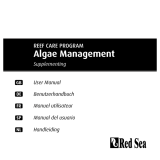 Red Sea NO3:PO4-X Bedienungsanleitung
Red Sea NO3:PO4-X Bedienungsanleitung
-
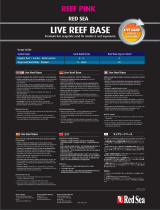 Red Sea Reef Base Pink Bedienungsanleitung
Red Sea Reef Base Pink Bedienungsanleitung
-
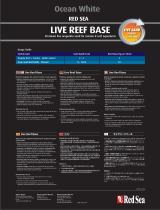 Red Sea Reef Base White Bedienungsanleitung
Red Sea Reef Base White Bedienungsanleitung
-
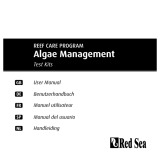 Red Sea Phosphate Pro Benutzerhandbuch
Red Sea Phosphate Pro Benutzerhandbuch
-
Red Sea Magnesium Pro Bedienungsanleitung
-
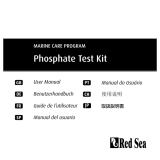 Red Sea Phosphate Benutzerhandbuch
Red Sea Phosphate Benutzerhandbuch
-
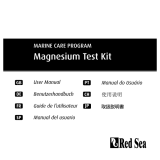 Red Sea Magnesium Bedienungsanleitung
Red Sea Magnesium Bedienungsanleitung
-
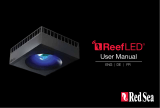 Red Sea ReefLED 50 Benutzerhandbuch
Red Sea ReefLED 50 Benutzerhandbuch
-
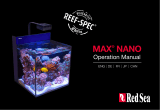 Red Sea MAX NANO Cube Bedienungsanleitung
Red Sea MAX NANO Cube Bedienungsanleitung
Andere Dokumente
-
Aqua Medic Percula 100 Bedienungsanleitung
-
 Aquadistri PO4 Phosphate Bedienungsanleitung
Aquadistri PO4 Phosphate Bedienungsanleitung
-
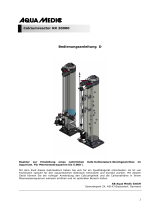 AquaMedic KR 20000 Bedienungsanleitung
AquaMedic KR 20000 Bedienungsanleitung
-
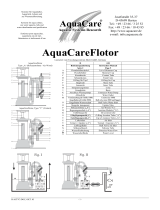 AquaCare Flotor A Benutzerhandbuch
AquaCare Flotor A Benutzerhandbuch
-
Hanna Instruments HI3895 Bedienungsanleitung
-
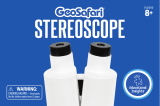 GeoSafari GeoSafari® Stereoscope Benutzerhandbuch
GeoSafari GeoSafari® Stereoscope Benutzerhandbuch
-
ProMinent DULCOTEST CGE 2-mA-2 ppm Operating Instructions Manual
-
Klarstein 10033122 Benutzerhandbuch























































